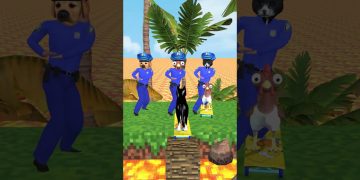Hey there fellow dog owners! Are you having trouble getting your furry friend to walk calmly on a leash? Trust me, you’re not alone. Leash training can be a tricky process, but with the right tools and techniques, it’s definitely doable. In this guide, I’m going to walk you through everything you need to know to leash train your dog like a pro.

Getting Started: Tips on how to prepare for leash training and what equipment is necessary
First things first, let’s talk about why leash training is so important. Sure, it’s nice to be able to take your dog for a walk around the block, but there are plenty of other benefits to leash training. For one, it helps keep your dog safe. By teaching your dog how to walk calmly on a leash, you can prevent them from darting out into the street or getting into other dangerous situations. Leash training also helps to strengthen the bond between you and your dog. When your dog is well-trained on a leash, you’ll be able to enjoy more relaxed walks together.
Now that you know why leash training is so important, let’s talk about the tools you’ll need to get started. The most important piece of equipment is, of course, the leash itself. You’ll want to choose a leash that’s the right length for your dog. A six-foot leash is a good place to start, but you may need to adjust the length based on your dog’s size and energy level. In addition to the leash, you’ll also want to invest in a good quality collar or harness. A harness is a great option if your dog is prone to pulling, as it distributes the pressure more evenly across the dog’s body.
Once you’ve got your equipment sorted, it’s time to establish a consistent training routine. The key to successful leash training is patience and consistency. Set aside some time each day to work on leash training with your dog. Start with short training sessions and gradually increase the length as your dog gets better at following commands.
Basic Commands: Explanation of basic commands for leash training (such as “heel”, “sit”, “stay”) and how to teach them
Now that you’re all set up, it’s time to start teaching your dog the basics. The first command you’ll want to teach your dog is “heel.” This command tells your dog to walk by your side, instead of pulling ahead or lagging behind. To teach your dog to heel, simply start walking and say “heel” in a firm but gentle voice. If your dog starts to pull ahead, stop walking and wait for them to come back to your side before continuing. Repeat this process until your dog gets the hang of it.

Advanced Techniques: Information on advanced leash training techniques, such as leash training for off-leash walks and dealing with distractions
In addition to teaching your dog to heel, you’ll also want to teach them to stop and come when called. “Stop” is an important command for when your dog starts to get too excited or pull too hard on the leash. To teach this command, simply say “stop” in a firm voice and stand still until your dog stops pulling. As for the “come” command, this is a great one to have in your back pocket in case your dog ever gets loose. To teach your dog to come when called, simply call their name and use a treat or toy as a reward when they come to you.
Once your dog has mastered the basic commands, it’s time to start working on more advanced techniques. This includes introducing your dog to different environments and distractions, such as busy streets or other dogs. It’s also important to work on teaching your dog to navigate obstacles and challenging terrain.
Despite your best efforts, there may be times when your dog’s leash training hits a snag. Common problems include leash pulling, fear and anxiety, and aggression. If your dog is having trouble with leash pulling, try using a harness instead of a collar. This can help distribute the pressure more evenly across your. Leash Training for Dogs









Discussion about this post